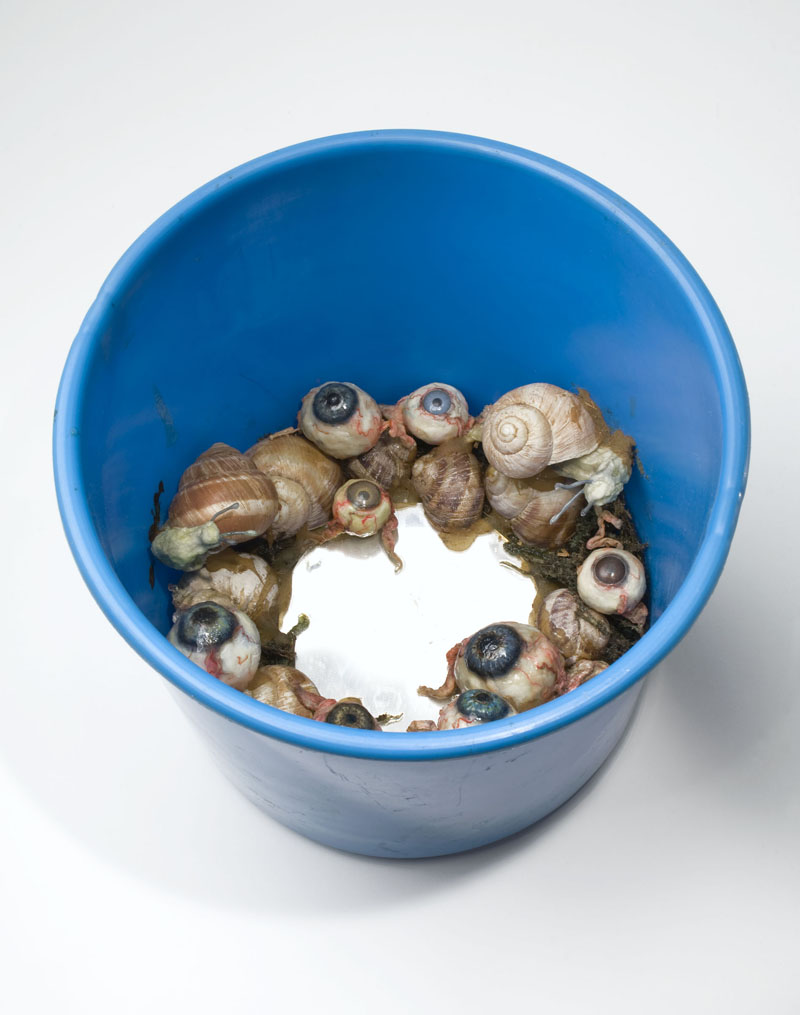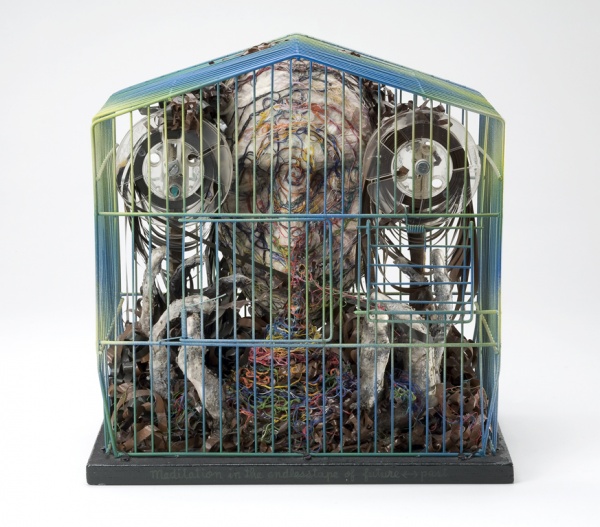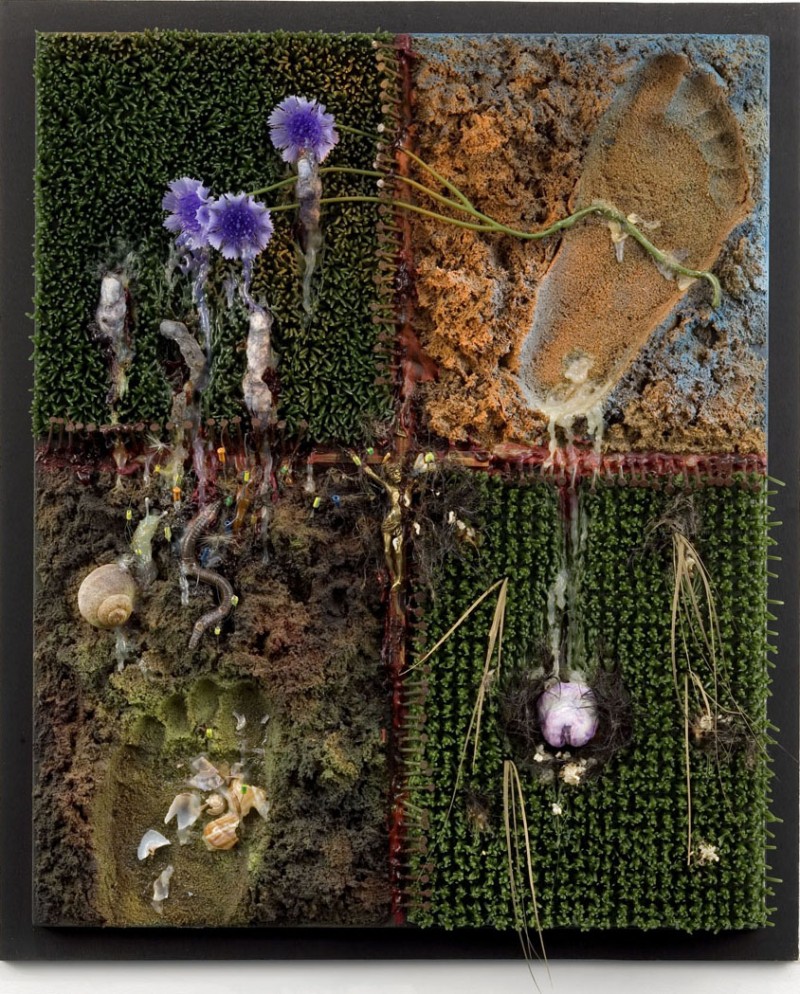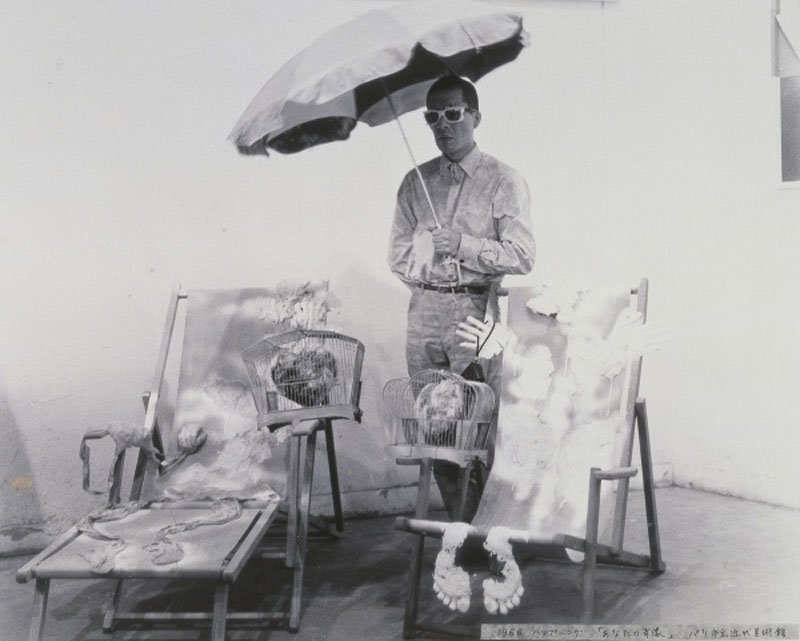Tetsumi Kudo
Cultivation of Nature-People Who Are Looking at It. 1970
Collection of Hiroko Kudo. Photo courtesy Andrea Rosen Gallery. Photo: Chris Burke
–
Meditation in the Endlesstape of the Future -Past. 1979
Courtesy of Andrea Rosen Gallery
–
Pollution, Cultivation, New Ecology. 1971-1973
Collection of David Giraud. Photo courtesy Andrea Rosen Gallery. Photo: Chris Burke
–
Jeux de Fils de la Mémoire. 1980
Courtesy of Joshua Mack. Photo: Chris Burke
–
Happening “Your Portrait” presented at the opening of the exhibition Salon de Mai at the Musée d’Art Moderne de la Ville de Paris. 1966. Collection Museum of Contemporary Art, Tokyo
–
exhibition view at Walker Art Center, Minneapolis. 2008-2009
–
exhibition view at Andreas Rosen Gallery. 2010
–
TETSUMI KUDO’s work includes more than 100 works of diverse media and scale—objects, sculpture, installation, drawing, and painting—covering the entire trajectory of his career, from the late 1950s through the late 1980s.
Using every instrument of control, from box to cage, from deposit receipt to transistorised garden, he set out to recount the metamorphosis of modern man. An ironic narrator, in the different stages of his work KUDO considers the bio-chemical survival of the human phenomenon and envisages its organic transformation. Heads are locked in cages, human limbs are connected to plants by electronic circuits, hands are held captive in an aquarium because TETSUMI KUDO cultivated, with perverse refinement, a sense of humour and cruelty.
In his world, man and technology are not in opposition. Raised together, they engender a new culture which he named “new ecology”. Man as we knew him has disappeared from KUDO‘s world, despite the flowers, cigarettes and crucifixes, the last remaining souvenirs of a long-ago existence. A new world takes its place, a world that no doubt remembers the unbearable violence of Hiroshima and which resolutely drapes itself in fluorescent colours.
TETSUMI KUDO was born in 1935 in Osaka, Japan and graduated from the Tokyo National University of Fine Arts in 1958. In 1962 he moved to France. He died of cancer on November 12, 1990 in Tokyo, Japan. After his death, he began to gain popularity in 2008 in the United States as his widow, HIROKO, helped to contribute to galleries whose aim it was to increase recognition of under-appreciated artists, such as the Andrea Rosen Gallery and the Walker Art Gallery.







comments are closed !